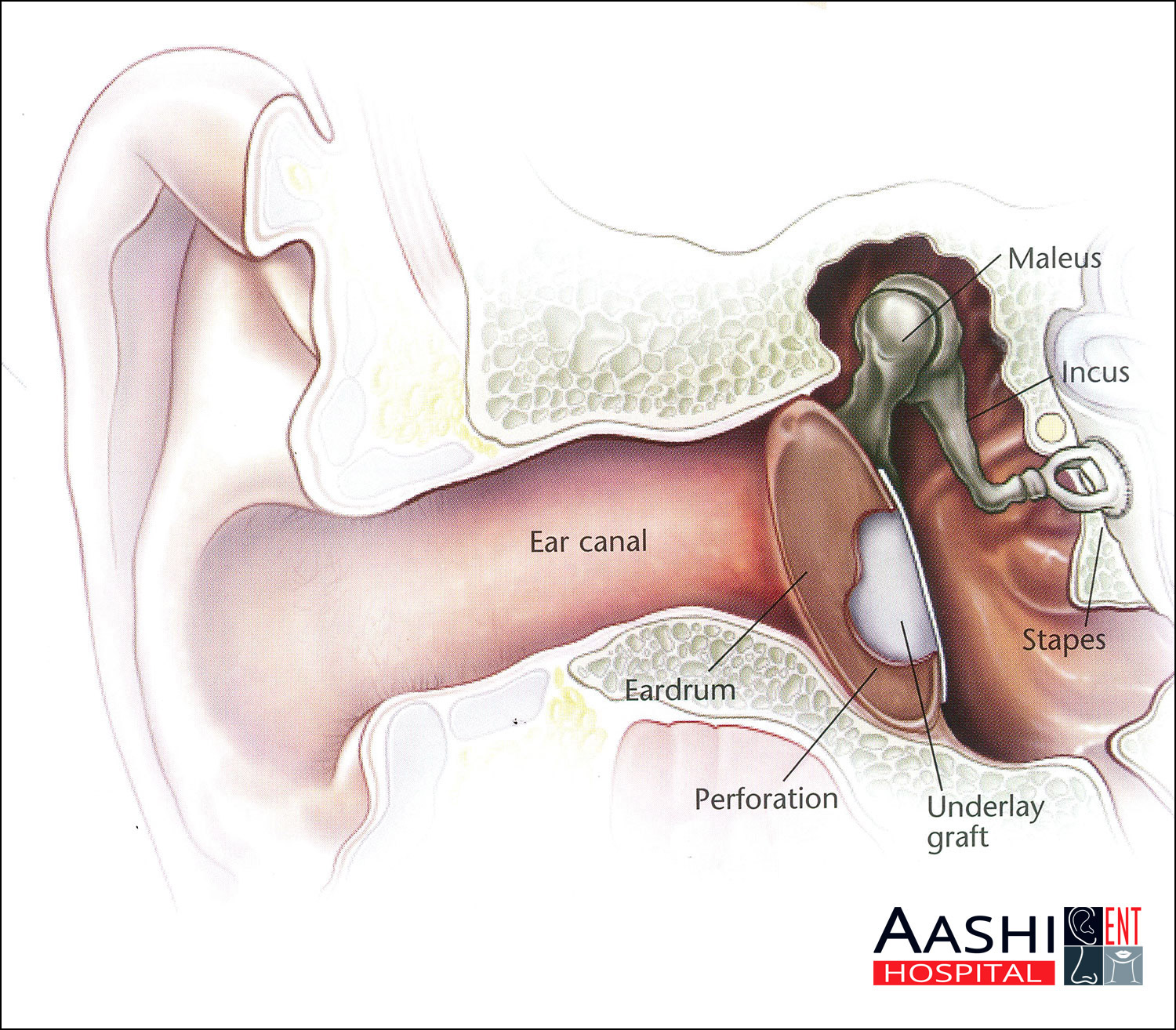Myringoplasty — Ahmedabad's Reliable Myringoplasty Surgeons & Clinic
- Myringoplasty is an operation to repair holes (perforations) in the eardrum. It is usually performed under general anaesthetic and takes about an hour.
- A cut is normally made in the skin crease just behind or just in front of the ear. Often, a small amount of hair is shaved off immediately beside the ear.
- A piece of tissue called a graft is used to patch the eardrum. This graft is normally taken from tissue called fascia that lies just under the skin behind the ear.
- The eardrum is lifted up, and the graft is placed on the underside of the hole and held in place with a small piece of dissolvable packing. A gauze wick fills the ear canal afterward to protect the eardrum and is removed 1–2 weeks later in the outpatient department.

- After the operation, there is little discomfort. Any pain is easily controlled with painkillers. It is quite common to feel slightly dizzy for 1–2 days.
- Most patients go home the day after surgery. It is best to take about 7 days off work. You must not get any water in the ear and should avoid swimming and flying for at least 6 weeks.
- The graft fails to take in about 20% of cases. The operation can be repeated if this happens.
- If the eardrum heals successfully, your hearing should improve, though it may not return completely to normal.

